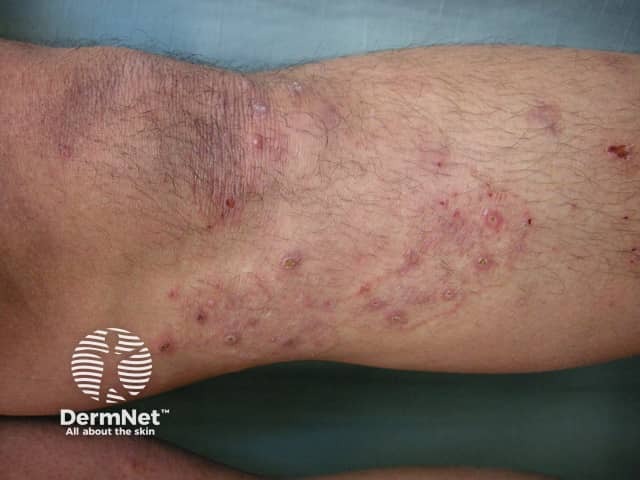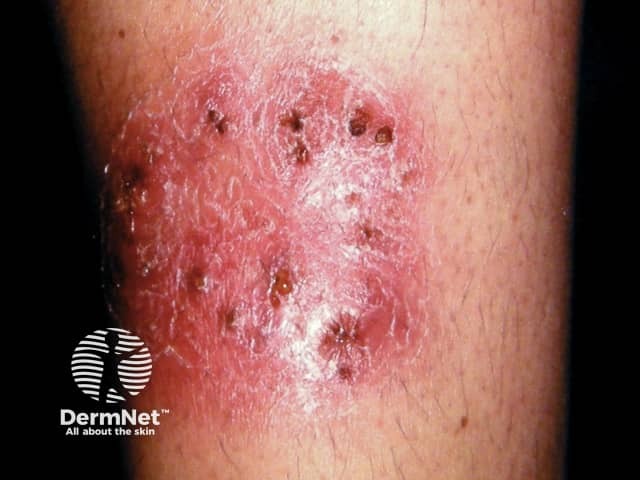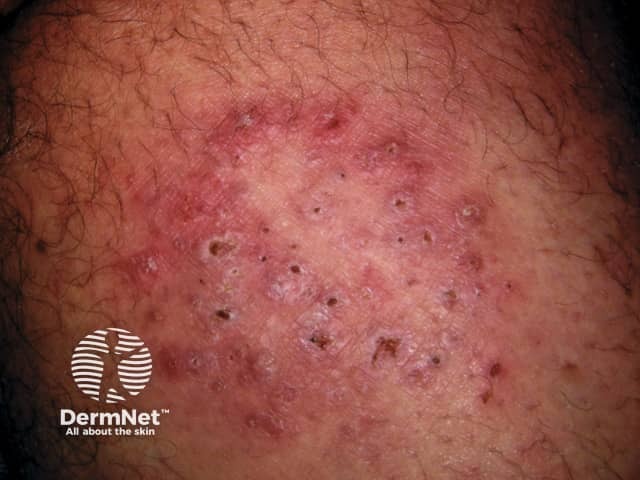Main menu
Common skin conditions

NEWS
Join DermNet PRO
Read more
Quick links
Infections Follicular disorder
Author: Dr Maneka Gnanasegaram, Dermatology Registrar, Greenlane Hospital, Auckland, New Zealand, 2012. Updated by Dr Jannet Gomez. DermNet Editor in Chief: Adjunct Assoc. Prof. Amanda Oakley, Hamilton, New Zealand. December 2018.
Introduction Demographics Causes Clinical features Diagnosis Treatment
Majocchi granuloma is a deep and persistent suppurative and granulomatous folliculitis (hair follicle infection) caused by fungal infection. Majocchi granuloma is also known as granuloma trichophyticum.
Various forms of tinea are common in males and females worldwide. Majocchi granuloma mostly affects adults. It is common in developing countries. The associated factors leading to deep follicular infection by dermatophyte fungi may include:
Majocchi granuloma is due to disruption of infected hair follicles so that hair shafts and fungi penetrate into the dermis and subcutaneous tissue.
The infection is most often caused by Trichophyton rubrum. Other fungi that may cause Majocchi granuloma include:
Majocchi granuloma presents with an irregular red, scaly plaque in which there are follicular papules, pustules and nodules. It is usually found on one lower leg.
Evidence for fungal infection may be found in other sites such as scaling on the sole of the foot (tinea pedis) or yellowed, irregular toenails (tinea unguium).
There are two forms of Majocchi granuloma.

Majocchi granuloma

Majocchi granuloma

Majocchi granuloma
Suspicion is raised due to the clinical appearance of Majocchi granuloma.
To confirm a fungal infection, scrapings and hair samples may be taken from the affected area for microscopy and fungal culture (mycology). Granulomatous inflammation is found on skin biopsy.
The recommended treatment for Majocchi granuloma is a 4 to 6-week course of oral antifungal agent.
Topical antifungal agents may not be effective due to the deep invasion of the fungus into the hair follicle.